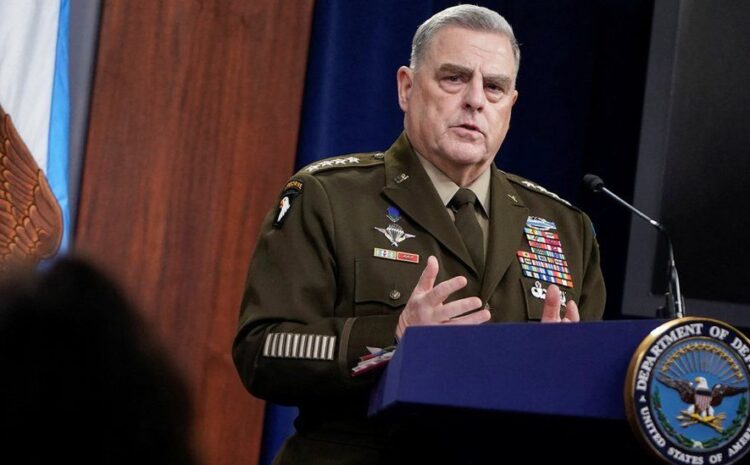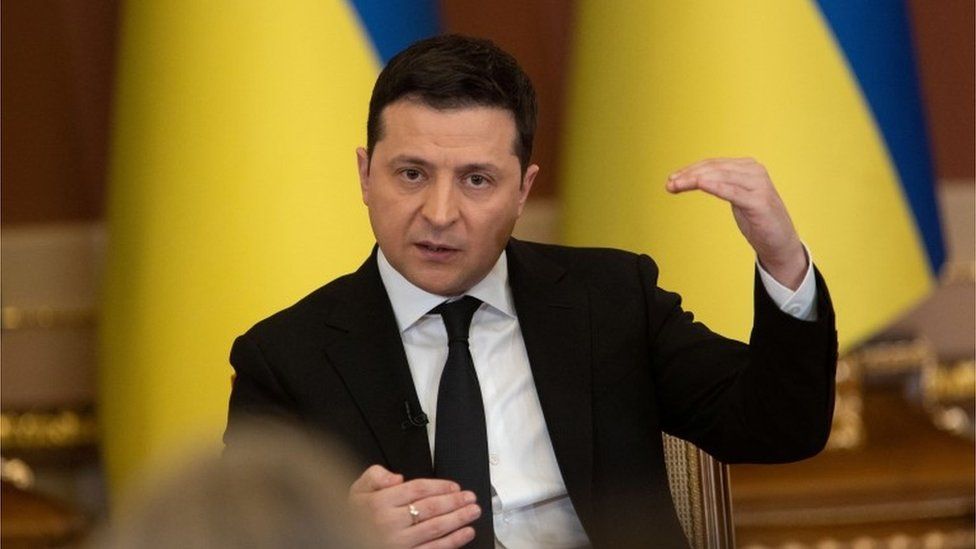
IMAGE SOURCE, REUTERS Image caption, General Mark Milley said a Russian invasion of Ukraine would be “horrific”
Gen Milley described the build-up of 100,000 Russian troops near Ukraine’s border as the largest since the Cold War.
But US Defence Secretary Lloyd Austin said conflict could still be avoided through the use of diplomacy.
Russia denies plans to invade and says US support for Ukraine is a threat.
At a news conference at the Pentagon on Friday, Gen Milley – US President Joe Biden’s most senior military officer – warned that the scale of Russia’s forces near its border with Ukraine meant an attack would have severe consequences.
“If that was unleashed on Ukraine, it would be significant, very significant, and it would result in a significant amount of casualties,” said the chairman of the joint chiefs of staff.
‘Not inevitable’
US Defence Secretary Lloyd Austin said the US was committed to helping Ukraine defend itself, including by providing more weaponry.
“There is no reason that this situation has to devolve into conflict… He can order his troops away,” he added.
Also on Friday, President Biden said he would send a small number of troops to Eastern Europe in the “near term”, to strengthen the Nato presence in the region. He did not specify where they would be stationed or when they would arrive.
Earlier this week, the Pentagon said there were 8,500 combat-ready troops on alert, ready to be deployed at short notice.
The US has rejected a key Moscow demand that Nato rule out Ukraine joining the defence alliance – but insisted it was offering Russia a “serious diplomatic path”.
Russian President Vladimir Putin accused the West of ignoring Russia’s security concerns.
But he said he would study the US response before deciding what to do, according to a Kremlin readout of a call between Mr Putin and his French counterpart.
France said the two leaders had agreed on the need to de-escalate and that its President Emmanuel Macron had told Mr Putin that Russia must respect the sovereignty of its neighbouring states.
 IMAGE SOURCE, REUTERS
IMAGE SOURCE, REUTERS‘Don’t create panic’
The warnings from the Pentagon come after Ukrainian President Volodymyr Zelensky told reporters not to create panic over the build-up of Russian troops on his country’s borders.
At a news conference in Kyiv, Mr Zelensky said he did not see a greater threat now than during a similar massing of troops last spring.
The “destabilisation of the situation inside the country” was the biggest threat to Ukraine, he said.

‘Ukraine is not the Titanic’
By Sarah Rainsford, Eastern Europe Correspondent
This was a slightly surreal encounter. One after another, journalists asked Ukraine’s president about the threat. But Volodymyr Zelensky batted away the questions, accusing the press itself of causing panic.
On the other hand, he wasn’t contradicting the US intelligence: “I can see the 100,000 soldiers,” he eventually clarified. But he went from hinting that Russia was simply scaremongering, getting a “sado-masochistic” pleasure from seeing Kyiv sweat, to admitting that Ukraine was preparing for the possibility of all-out war.
Still, Mr Zelensky reminded people that his country has lived with the threat of Russian aggression for years – it goes in cycles – and despite the unusual size of the current deployment, he seemed determined to play down the danger.
When it came to the evacuation of some staff by some embassies, Ukraine’s leader was openly peeved: “Diplomats are like captains,” Mr Zelensky said. “They should be the last to leave a sinking ship. And Ukraine is not the Titanic.”

Russia last month made wide-ranging security demands from the West, including that:
- Ukraine should be barred from joining Nato
- Nato should end military activity in eastern Europe, pulling troops out of Poland and the Baltic republics of Estonia, Latvia and Lithuania
- The alliance should not deploy missiles in countries near or bordering Russia
The US and Nato responded by saying Ukraine had the right to choose its own allies, but offered Russia talks on missile placements and other issues.
If Russia were to invade Ukraine, it would not be the first time.
Russia annexed Ukraine’s southern Crimea peninsula in 2014. It is also backing rebels who seized large swathes of the eastern Donbas region soon afterwards, and some 14,000 people have died in fighting there.
